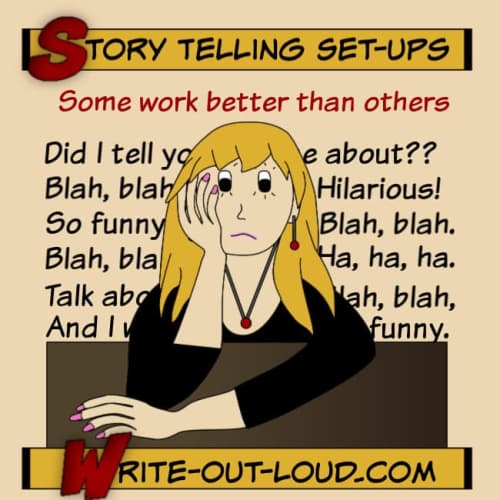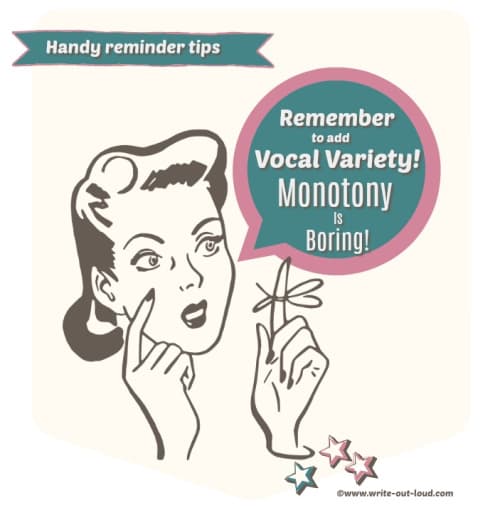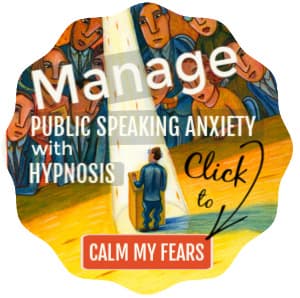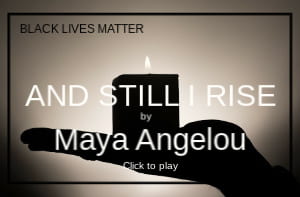- HOME ›
- Speech delivery ›
- Storytelling in speeches
Storytelling in speeches
Tips and techniques to improve your speech with stories
By: Susan Dugdale | Last modified: 01-29-2024
Do you remember storytelling from your childhood?
I do.
Some stories are as clear in my mind as if I heard them yesterday. I can remember who was telling the story, what it was about, what the actual words were and most of all, how I felt listening to it.
And that's the power of good storytelling. It lives on in memory for years and years.
No matter how old we are we can still be captivated by a story told
well. That's why including stories as part of any speech you give will
enhance it immeasurably.
Obviously, there are some guidelines to follow. It's not just any story you tell or of any length. And there are specific ways to improve your storytelling.
Shall we get started?
What's on this page
- how to choose what story to tell
- the benefit of using personal stories, with an example
- how to improve your story telling: 6 suggestions, with step-by-step help, to increase your presentation skills
- links to more useful resources, including narrative speech topics or tell-a-story speech ideas
How to choose what story to tell
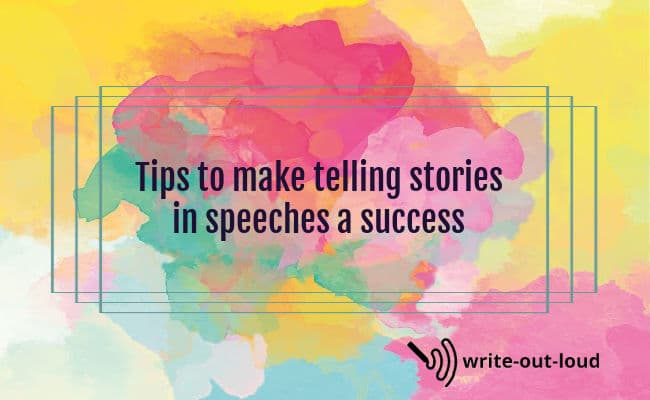
1.Begin with your audience
You need to know who they are,
what their likes and dislikes are, to get an idea of what you can, and
can't share with them.
The treatment or how you tell your story will vary
between audiences, just as humor does. What is funny to one group may
not be to another. It is safer to know rather than guess and risk
silence.
2. Fit your story to your theme, topic & purpose
Telling a random story: one that doesn't appear to have a specific purpose linking it to your topic or theme will go down like the proverbial lead balloon. Before finalizing your choice, think it through.
What do you want your audience to do, or feel as they listen to your story?
- If you want to spur them into action to make a change, try the classic 'before and after story' format focusing on how the change can be made and the benefits to be gained.
- If you want your audience to see you, the story teller, as one of them, someone who knows what it's like to be in a similar position, then share a personal story illustrating your vulnerability or a segment of your journey from failure to success.
- If you want your audience to connect with others, to find their similarities rather than their differences, tell stories with a universal appeal. These are the stories prompting a 'Yes, that's me as well' response, 'I've felt like that too.'.
They do it regardless of age differences, the color of a person's skin, where they live or how much money they have.
To work as you want it to, a story needs to fit your audience, your purpose and you must be credible telling it.
Tell your own stories for audience connection
Don't be afraid of sharing personal stories: using your own experiences to poke a little fun at yourself. The audience will love you for it.
Exposing your fears, habits, or misunderstandings lets them identify with you. You stop being the remote expert and become one of them, on their side.
The power of a good story is that it humanizes. It reaches across barriers to bring us home to the heart of ourselves and, each other. A story helps us to feel, think, know and understand.
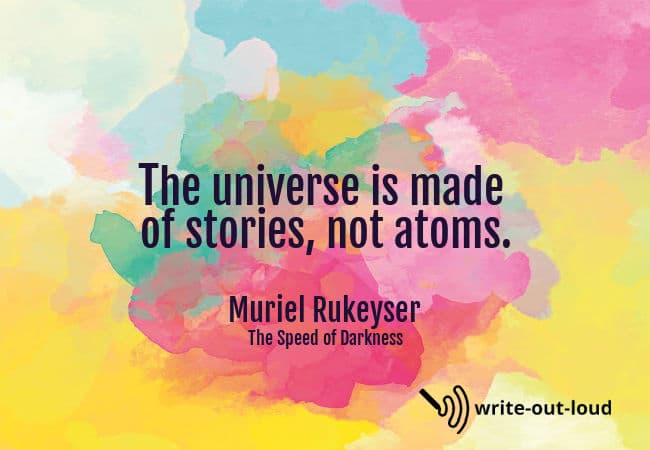
Here's an example of a personal story to illustrate
It is a true story from my extensive been-there-done-that-what-not-to-do department. I told it to students as part of preparing them for formal job interviews. The story made them laugh, relax, and hopefully they learned a little from my naivety.
On being young and having convictions
I was 22 and at my first real job interview - hair clean and brushed, best clothes, shoes polished. I'd brought my CV, references and my certificates and I really wanted the job. I sat upright, as straight backed as the chair I was sitting on, listening very carefully to the questions and answering each of them thoroughly.
Suddenly towards the end, the interviewer leaned forward, fixed his eyes on mine and said quietly, "Have you any convictions?"
I blushed. I looked down. He waited.
Then, taking a deep breath, I began. "I've got lots of convictions."*
He stared but I plunged boldly on. "Yes", I said. "I believe in 'do unto others as you would have done to yourself'. I think it's really important to try to understand what it's like to be in another person's shoes. I also believe..."
I didn't finish because the interviewer was snorting with laughter.
*The word "convictions" has several meanings. One is to have been found guilty or convicted of a crime by a court of law which is the meaning the interviewer intended. Another is to hold strong beliefs which was how I interpreted the word.
The purpose behind telling the story was to help my students understand the importance of asking for clarification if they don't understand the question or if it seems out of context. I wanted them to know it was more than OK to ask the interviewer to rephrase a question in words they knew.
(And now that I am much older, I also realize how unconsciously privileged I was as a young girl. It would never have occurred to me that someone would even think to ask me that question.)
Six ways to improve your storytelling
1. Keep it short
If your story goes on too long the impact is lost. And you will have strayed from your original purpose which was to give an effective example of a point you were making. Keep it brief!
2. Eliminate all the inconsequential detail
The rule is if it doesn't add to the story - cut it out. Too much fluff weakens the impact.
For instance, I could have added a great deal more to my story. I could have told you about the dress I made especially for the interview: the fabric I chose, the pattern I used, how I hand sewed the hem...
Or about how I was almost late because I couldn't find a park.
Or about how I had to save to get the money to pay for the petrol to put in the car to get me there.
3. Practice
Learn the story rather than read it. Good
story telling is active and direct.
Reading will not give you immediate contact with your audience because you have to keep returning to a text.
Without it, you're free to deliver one line to the man at the back, an aside to the woman at the front etc. etc. And you can move freely.
The more practice you give
yourself the better you'll become.
4. Vary your voice and body language
Try different voices for different characters.
Find out where to pause, where to stress a word, where to go faster and allow yourself to 'act out' what you're saying.
For example, if you're talking about being happy then reflect it in your body, and in your voice. Show it as well as tell it because good storytelling is active rather than passive.
For more specific information click: characterization techniques.
5. Introduce your story well
Did you know there are more effective ways than others to introduce or lead into your story?
Read about the best storytelling setups here.
6. Rehearse in front of a few trusted friends
Find out if your story works before trying it out in a more public arena.
Do you know the expression: I wish the ground had opened up and swallowed me?
It refers to the embarrassment of getting something publicly wrong, and wanting to be out the situation, out of people's sight, as fast as possible. It's not a pleasant place to be - a lesson I've learned the hard way!
Do try your story out. I've got helpful information here on how to rehearse your speech.
PS
I got that job!
PPS. For more about delivering a story well
Click the link for easy-to-follow help with vocal delivery: how to vary your speech rate, use pauses effectively, change pitch and tone, voice projection, good breathing, and more.
I've also got two pages of speech topic suggestions that are perfect for honing story telling skills. (If you're looking for suitable topics for the Toastmasters Level 3 Storytelling project, do check these out.)
- 125 narrative speech topics -This page includes a free printable narrative speech outline.
- 60 vocal variety and body language topics.
Is your speech writing "blah, blah, bland"?
Discover how action verbs make your writing vocally vibrant, succinct and precise.
